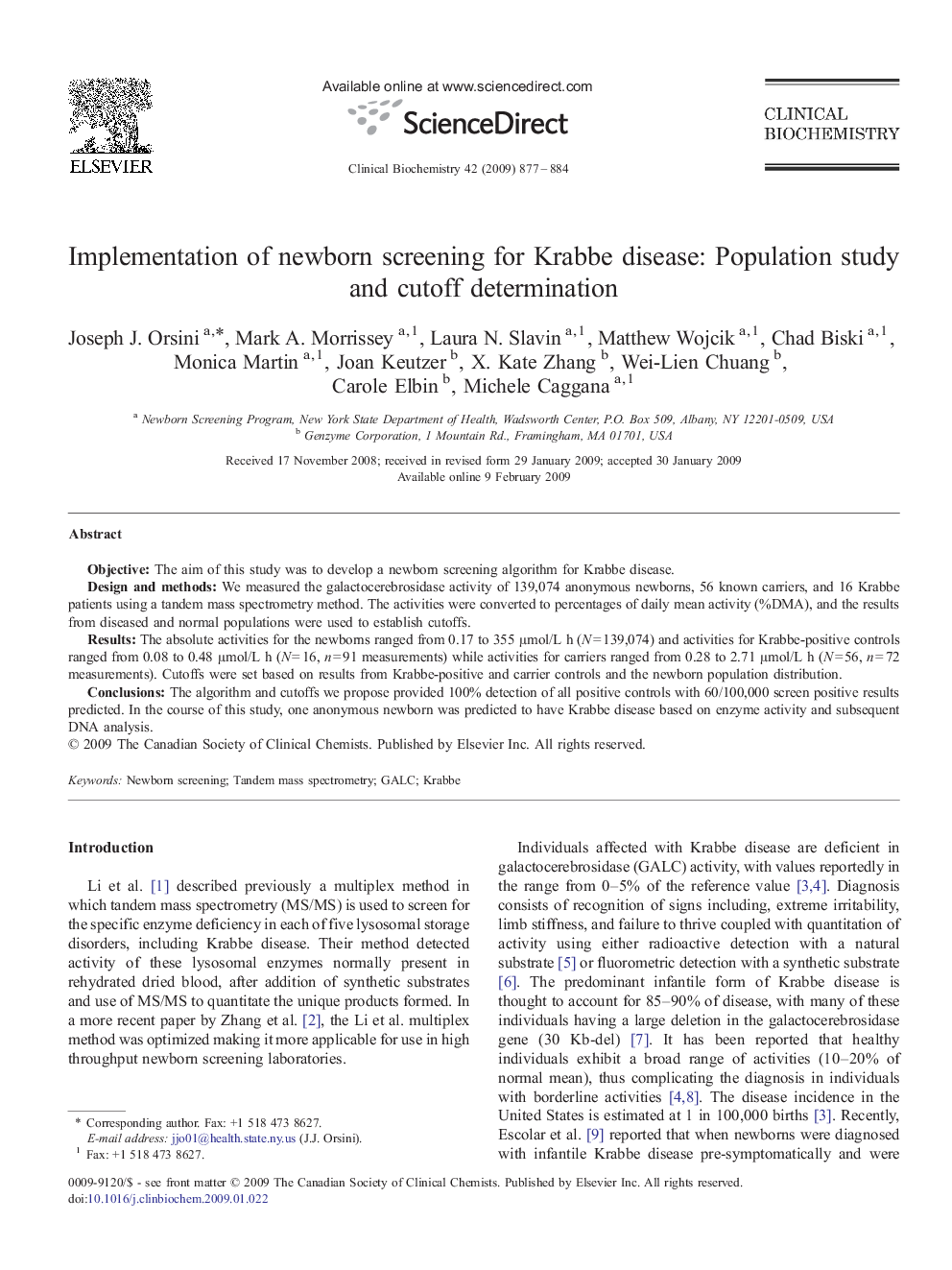| Article ID | Journal | Published Year | Pages | File Type |
|---|---|---|---|---|
| 1971080 | Clinical Biochemistry | 2009 | 8 Pages |
ObjectiveThe aim of this study was to develop a newborn screening algorithm for Krabbe disease.Design and methodsWe measured the galactocerebrosidase activity of 139,074 anonymous newborns, 56 known carriers, and 16 Krabbe patients using a tandem mass spectrometry method. The activities were converted to percentages of daily mean activity (%DMA), and the results from diseased and normal populations were used to establish cutoffs.ResultsThe absolute activities for the newborns ranged from 0.17 to 355 μmol/L h (N = 139,074) and activities for Krabbe-positive controls ranged from 0.08 to 0.48 μmol/L h (N = 16, n = 91 measurements) while activities for carriers ranged from 0.28 to 2.71 μmol/L h (N = 56, n = 72 measurements). Cutoffs were set based on results from Krabbe-positive and carrier controls and the newborn population distribution.ConclusionsThe algorithm and cutoffs we propose provided 100% detection of all positive controls with 60/100,000 screen positive results predicted. In the course of this study, one anonymous newborn was predicted to have Krabbe disease based on enzyme activity and subsequent DNA analysis.
